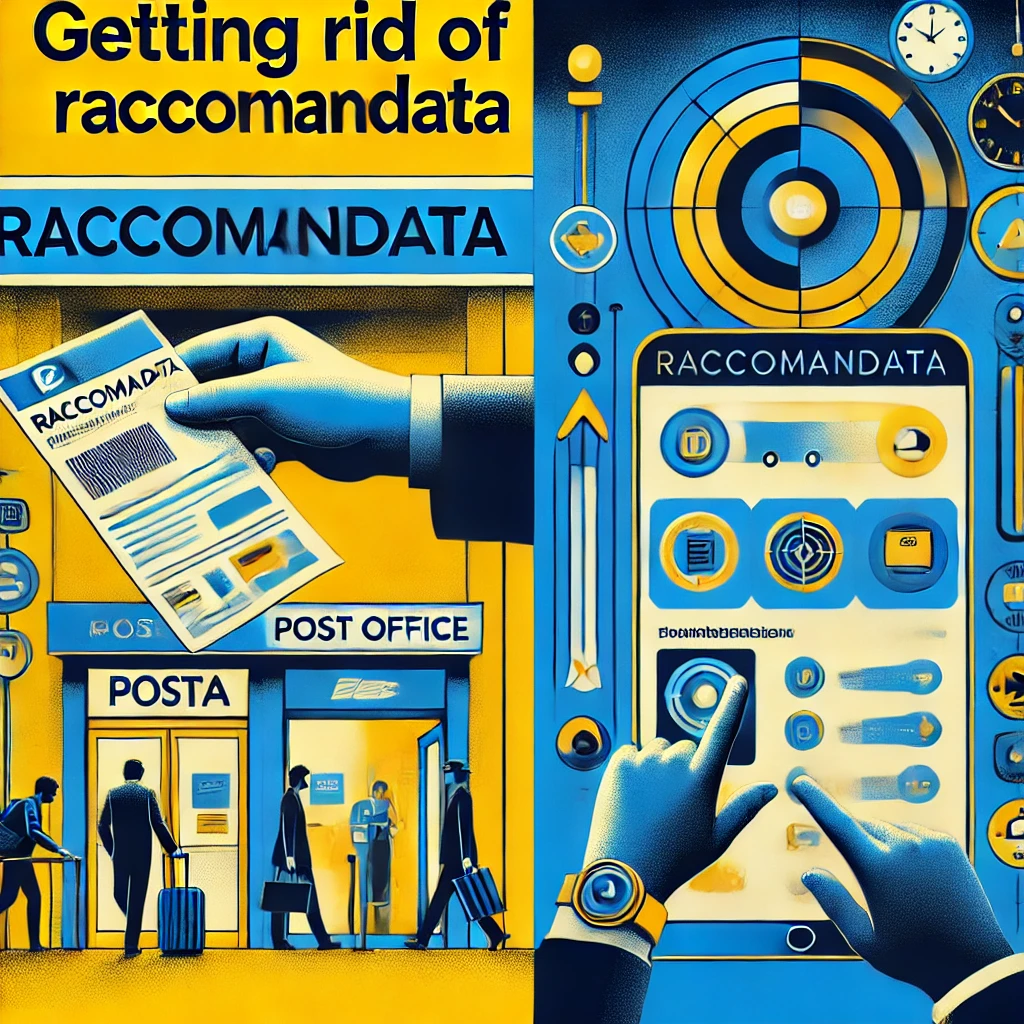For best 4D results play this song as you read this post
When I joined Poste Italiane, I was young—and like many young people, idealistic. By then, I had already accumulated significant experience: nearly seven years consulting on process technology and strategy, two years completing an MBA, and service as a Navy officer in the Naval Arms Corps. I was no novice. Yet, I had a singular ambition: to rid the Italian population of a cumbersome and outdated product—the Raccomandata.

To someone outside Italy, the Raccomandata might seem like an ordinary product. Translating to “Registered Mail,” it’s a service where the postal operator carefully tracks the delivery of letters or small packets to ensure they don’t get lost or stolen. Globally, it’s typically used for valuable items or important information.
But in Italy—thanks to a legal and administrative framework shaped by Napoleonic influences—the Raccomandata took on a more sinister role. Here, it became the tool of last resort for delivering unwelcome communications: fines, tax enforcement orders, overdue utility bills, and other demands. Without the Raccomandata, such correspondence could easily be ignored. With it, recipients were forced to acknowledge delivery, often with great inconvenience.
The Problem with the Raccomandata
The issue isn’t just the content of the mail—it’s the process. Delivery requires a signature. If the recipient isn’t home, they’re left with a yellow notification card, prompting a dreaded trip to the post office. There, they must queue—sometimes for half an hour or more—to collect the mail in person. For someone busy, like I was during my consulting years, this was a maddening waste of time.
Even back in 2004, it was clear to me that there had to be a better way. The digital age offered tools to replicate the function of the Raccomandata without the physical hassle. It wasn’t just about efficiency; it was about respect for people’s time.
Calculating the Social Cost
One of my first initiatives at Poste was to estimate the societal impact of the Raccomandata. The results were startling. The negative externalities—the collective time wasted, the inconvenience, the frustration—were significant. Yet, when I shared my findings internally, the reaction was telling: “Luca, interesting—but make sure no one sees it.” This was my first encounter with a corporate culture that prized revenue preservation over honest self-reflection.
Il-Costo-Sociale-delle-Code-presso-gli-UPA Vision for Change
As I rose through the ranks at Poste, eventually leading the design and delivery of innovative digital and e-government services, I saw an opportunity to act. My team developed a digital alternative, tentatively called MailAR (Mail with Avviso di Ritorno, or Certification of Receipt). It was designed primarily for SMEs and professionals, replicating the legal value of the Raccomandata without the physical burden.
Concept-MailARFirst attempt to design digitally around the Raccomandata: October 2004. I was 4 months in the company
We conducted focus groups, refined the product, and priced it at €1.10—a 60% discount from the €2.54 cost of the Raccomandata at the time. It was well-received, and I was optimistic.
Meanwhile, a parallel innovation—PEC (Posta Elettronica Certificata)—had been introduced in 2005. PEC provided fully digital, legally certified communication. However, Poste’s lobbying efforts ensured its adoption was slow. Only in 2009 did the government make PEC mandatory for businesses and professionals.
The Harsh Reality
Despite promising prospects, MailAR was never launched. A pivotal conversation with my boss, the Head of Strategy, revealed why:
- Boss: “Luca, how much are Raccomandate worth to the company?”
- Me: “250 million Raccomandate annually, generating over €600 million in revenue.”
- Boss: “What happens if we introduce MailAR?”
- Me: “We’ll likely downgrade 25% of Raccomandate, reducing revenues by around €75 million.”
And that was that. My boss was right. Poste Italiane was an incumbent, and incumbents only innovate when forced. For every €75 million lost, approximately 2,500 salaries were at stake. From a corporate perspective, preserving the status quo made sense.
The Broader Lesson
This experience underscored a harsh truth: disruptive innovation rarely flourishes in large corporations. The incentives to protect legacy revenue streams outweigh the potential benefits of change. Even when digital alternatives like PEC were introduced, adoption was slow and carefully managed to minimize disruption.
This isn’t just about Poste. It’s a systemic issue. Capitalism, as the “atomic unit” of the invisible hand, prioritizes profit over social good. Government intervention, like the PEC mandate, is essential to push incumbents toward meaningful innovation.
Final Thoughts
Looking back, my attempt to “kill the Raccomandata” was doomed from the start. While incumbents can and do innovate, their approach is cautious, incremental, and driven by necessity rather than vision. For true disruptive innovation, it often takes an outsider—or a compelling regulatory framework—to break through entrenched systems.
Still, the effort was worth it. It highlighted the inefficiencies, challenged the status quo, and planted the seeds for a future where the Raccomandata might someday be fully digital. Change is slow, but it starts with asking the right questions—and daring to dream of better solutions
